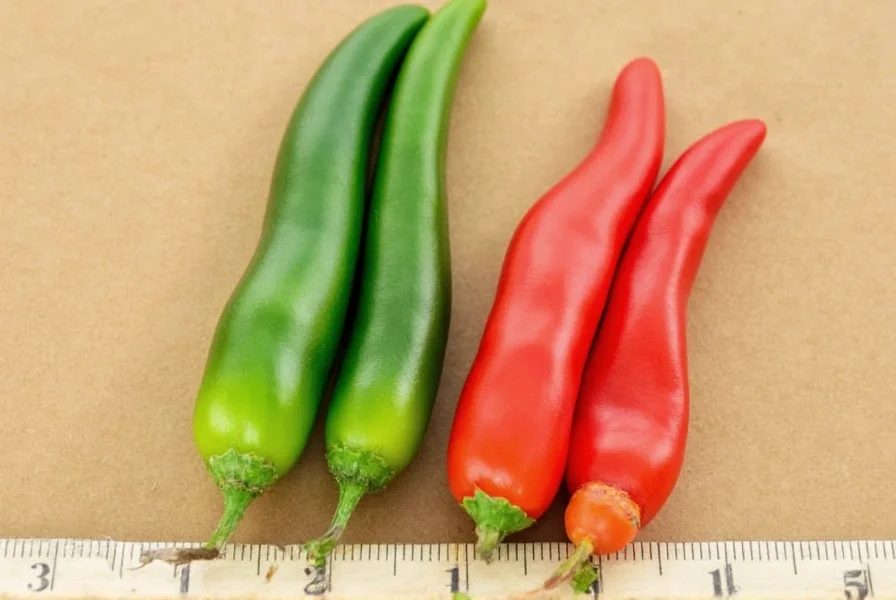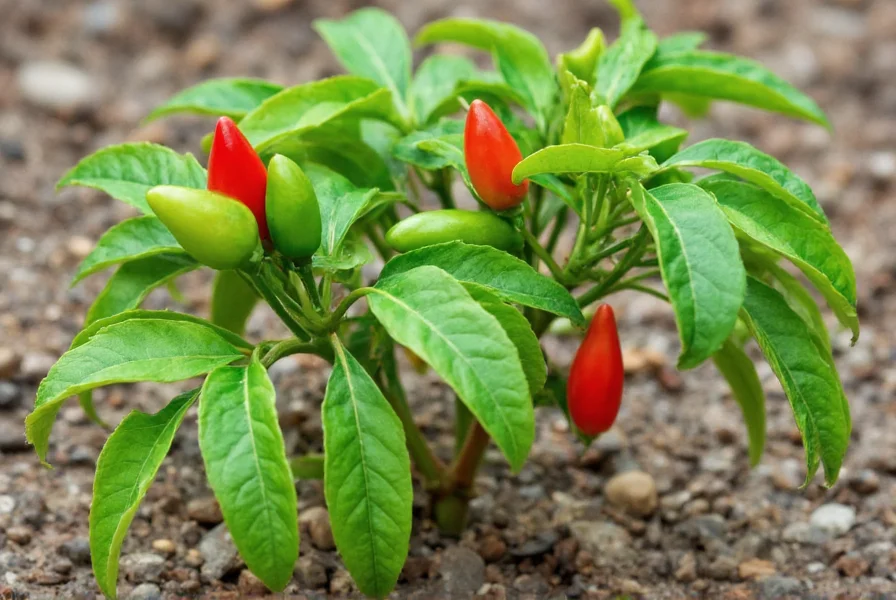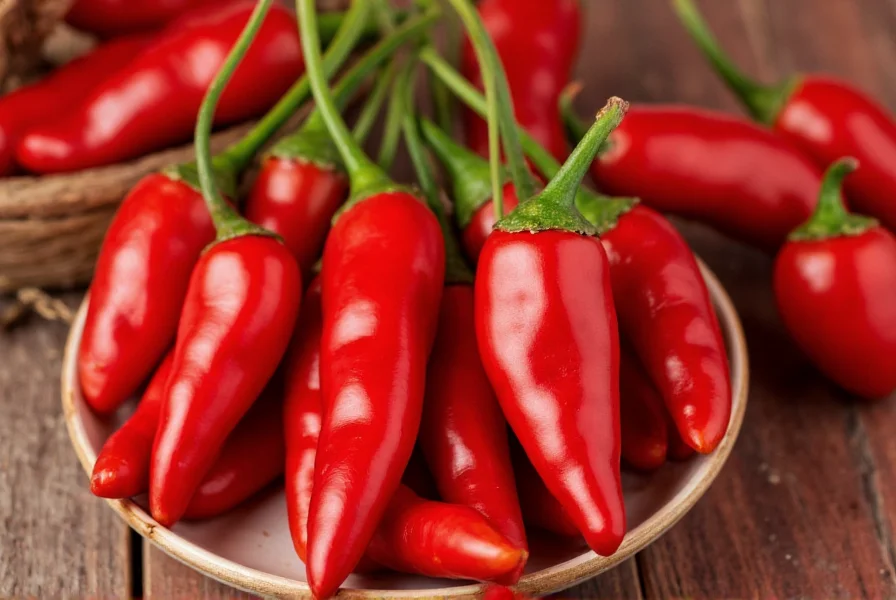When exploring serrano chili characteristics, you'll discover why these peppers have become staples in both traditional and modern kitchens. Their distinctive heat profile and flavor complexity make them versatile for fresh preparations and cooked dishes alike. Understanding serrano pepper properties helps home cooks and chefs maximize their culinary potential while managing heat levels effectively.
Understanding Serrano Chili Heat Level
The scoville scale measurement for serrano peppers ranges from 10,000 to 23,000 units, placing them firmly in the medium-heat category. This makes them significantly hotter than jalapeños (2,500-8,000 SHU) but milder than habaneros (100,000-350,000 SHU). The heat concentrates primarily in the seeds and inner membranes, allowing careful preparation to control spiciness.
Several factors influence serrano chili heat intensity:
- Color maturity (red varieties often milder than green)
- Growing conditions (drier climates produce hotter peppers)
- Soil composition and nutrient availability
- Preparation method (roasting reduces perceived heat)
| Pepper Variety | Scoville Heat Units | Relative Heat to Serrano | Flavor Profile |
|---|---|---|---|
| Serrano | 10,000-23,000 | 1x (baseline) | Bright, grassy, citrus notes |
| Jalapeño | 2,500-8,000 | ⅓ to ½ as hot | Earthy, slightly sweet |
| Habanero | 100,000-350,000 | 5-15x hotter | Tropical fruit, floral |
| Cayenne | 30,000-50,000 | 2-3x hotter | Sharp, pungent |
Physical Characteristics and Varieties
Serrano peppers typically measure 1-4 inches long with a diameter of about ½ inch. Their smooth, firm skin transitions from dark green to brilliant red, yellow, or orange as they mature. The tapered shape features a distinctive downward curve, unlike the more rounded jalapeño.
Several serrano chili cultivars exist, each with subtle differences:
- Habanero serrano - Exceptionally hot variety reaching up to 30,000 SHU
- Tampiqueño - Ripens to vibrant red with slightly sweeter profile
- Colima - Known for consistent heat and high yield
- Serrano típico - Traditional Mexican variety with balanced heat

Culinary Applications and Flavor Profile
The serrano pepper flavor profile features bright, grassy notes with subtle citrus undertones that distinguish it from other medium-heat chilies. Unlike jalapeños which develop earthiness when cooked, serranos maintain their fresh, vibrant character even in cooked preparations.
Professional chefs value serranos for their culinary versatility with serrano chilies:
- Fresh applications: Essential in pico de gallo, fresh salsas, and guacamole
- Cooked dishes: Holds up well in stews, braises, and simmered sauces
- Pickling: Maintains crisp texture better than jalapeños when pickled
- Infusions: Creates vibrant hot sauces and vinegar infusions
When cooking with serrano peppers, remember that heat distribution varies within the pepper. The tip typically contains less capsaicin than the shoulder area near the stem. For controlled heat, remove seeds and membranes thoroughly, and always wash hands after handling.
Growing Serrano Peppers Successfully
Home gardeners seeking how to grow serrano chili plants should note these peppers thrive in warm climates with well-draining soil. They require 70-90 days to maturity from transplanting and prefer full sun exposure. Unlike bell peppers, serranos tolerate drier conditions but produce best with consistent moisture.
Key considerations for serrano pepper cultivation:
- Start seeds indoors 8-10 weeks before last frost date
- Maintain soil temperature above 70°F (21°C) for optimal germination
- Provide support as plants mature (they can reach 2-3 feet tall)
- Harvest when peppers reach desired color (green for sharper heat, red for milder flavor)

Storage and Preservation Techniques
Proper serrano chili storage methods extend freshness significantly. Whole peppers keep for 2-3 weeks in the refrigerator's crisper drawer. For longer preservation, consider these options:
- Freezing: Blanch whole peppers for 2 minutes, then freeze in airtight containers (up to 1 year)
- Drying: String peppers and air-dry or use a food dehydrator (ideal for making chili powder)
- Pickling: Create refrigerator pickles lasting 6 months or process for shelf-stable preservation
- Oil preservation: Submerge in olive oil with garlic (refrigerate and use within 1 month)
Serrano Substitution Guide
When substituting serrano peppers in recipes, consider both heat level and flavor profile. While jalapeños are the most accessible alternative, they lack the serrano's distinctive brightness. For authentic results:
- For fresh applications: Use 1½ jalapeños per serrano (remove seeds for closer heat match)
- For cooked dishes: Consider Thai bird chilies at ⅓ quantity (adds different flavor profile)
- For milder heat: Try fresno peppers which share similar flavor with less intensity
- For dried applications: Guajillo chilies provide comparable fruitiness with less heat
Always taste as you go when substituting, as individual pepper heat varies significantly even within the same variety. The serrano chili substitution ratios serve as starting points rather than exact equivalents.
Frequently Asked Questions
How much hotter are serranos than jalapeños?
Serrano peppers are typically 2-3 times hotter than jalapeños. While jalapeños range from 2,500-8,000 Scoville Heat Units, serranos measure 10,000-23,000 SHU. The heat difference becomes particularly noticeable when using multiple peppers in a recipe.
Can you eat serrano peppers raw?
Yes, serrano peppers are commonly eaten raw in salsas, pico de gallo, and fresh guacamole. Their crisp texture and bright flavor shine in uncooked applications. For milder heat, remove seeds and inner membranes before using raw. Always handle with care and wash hands thoroughly after preparation.
What's the best way to reduce serrano pepper heat?
To reduce serrano pepper heat effectively: 1) Remove all seeds and white membranes (where capsaicin concentrates) 2) Soak sliced peppers in cold salt water for 15-30 minutes 3) Pair with dairy products like yogurt or sour cream which neutralize capsaicin 4) Cook with acidic ingredients like lime juice which can mellow perceived heat. Remember that heat perception varies by individual.
Do red serrano peppers taste different from green ones?
Yes, red serrano peppers develop a slightly sweeter, more complex flavor compared to green serranos while maintaining similar heat levels. The red varieties have ripened longer on the plant, developing more sugars. Many chefs prefer red serranos for sauces where a fruitier profile is desired, while green serranos work better for dishes requiring brighter, grassier notes.
How do you prevent skin irritation when handling serranos?
To prevent skin irritation: wear disposable gloves during preparation, avoid touching your face, and wash hands thoroughly with soap and cold water afterward (hot water opens pores). If irritation occurs, apply milk, yogurt, or a baking soda paste to affected areas. Never use hand sanitizer immediately after handling hot peppers as the alcohol can spread capsaicin.











 浙公网安备
33010002000092号
浙公网安备
33010002000092号 浙B2-20120091-4
浙B2-20120091-4